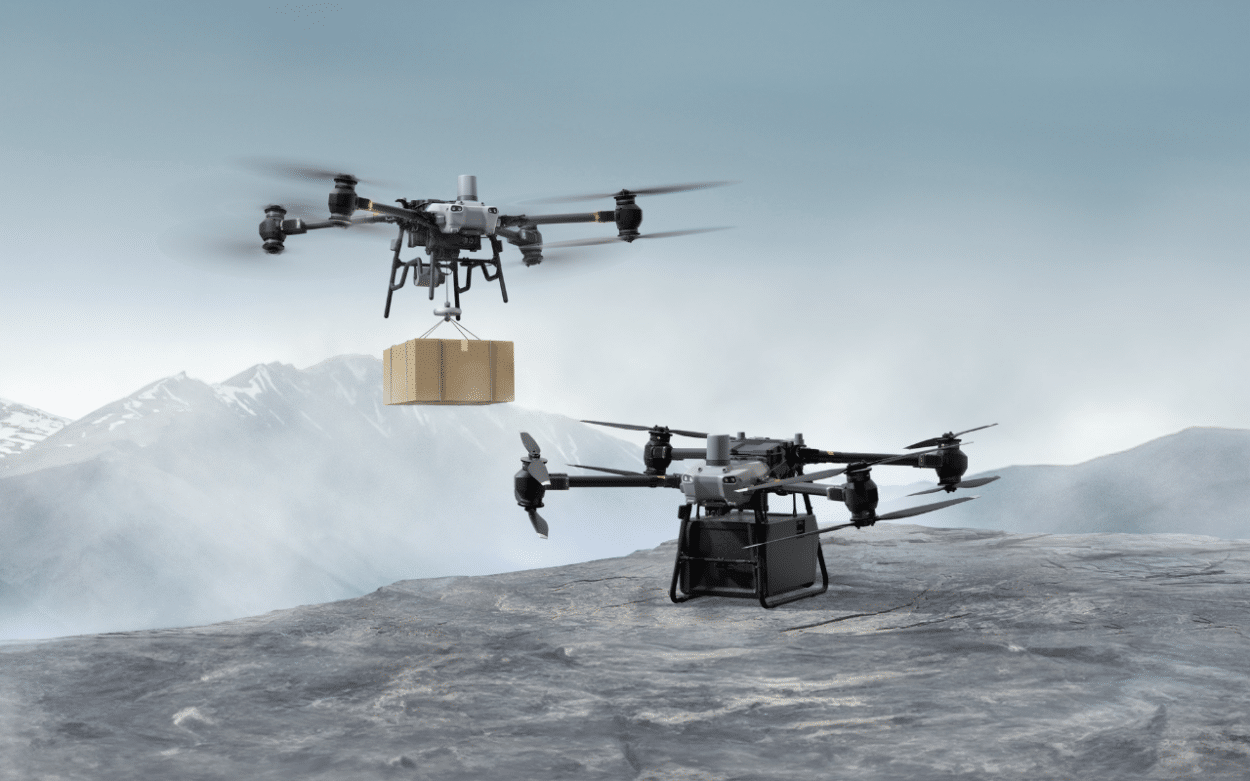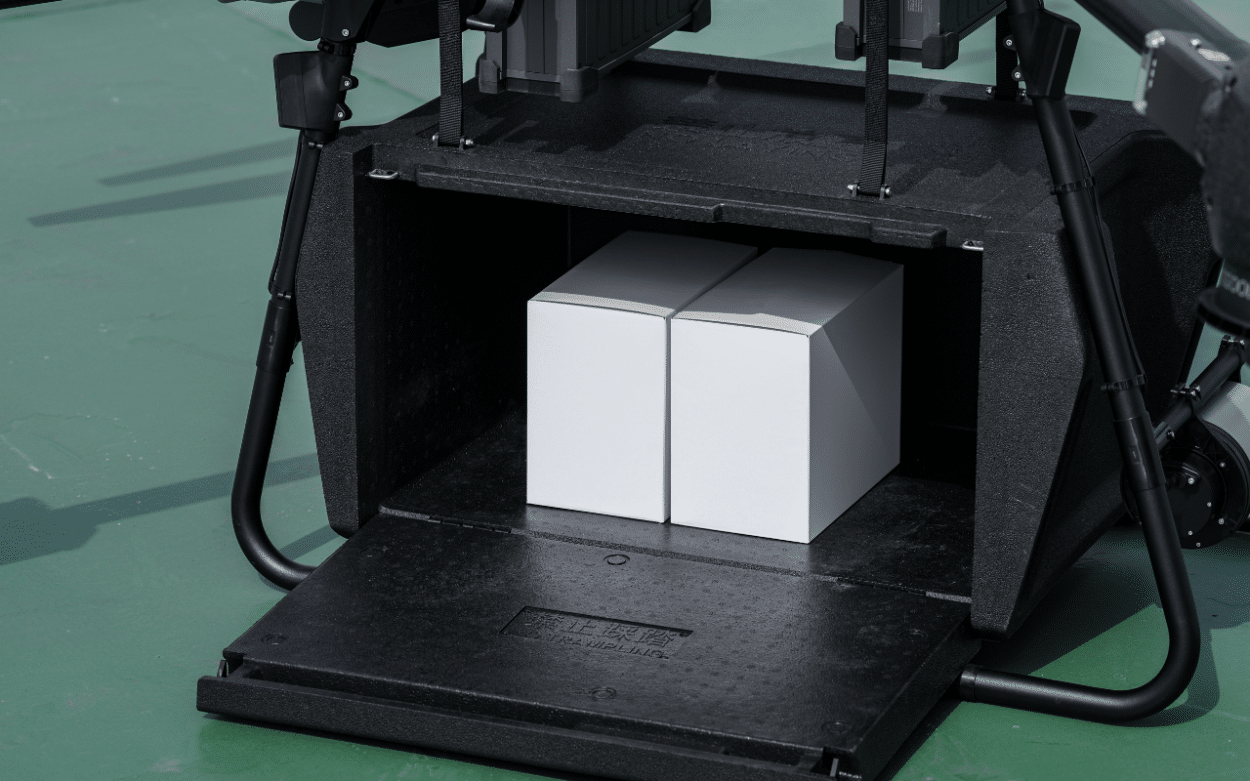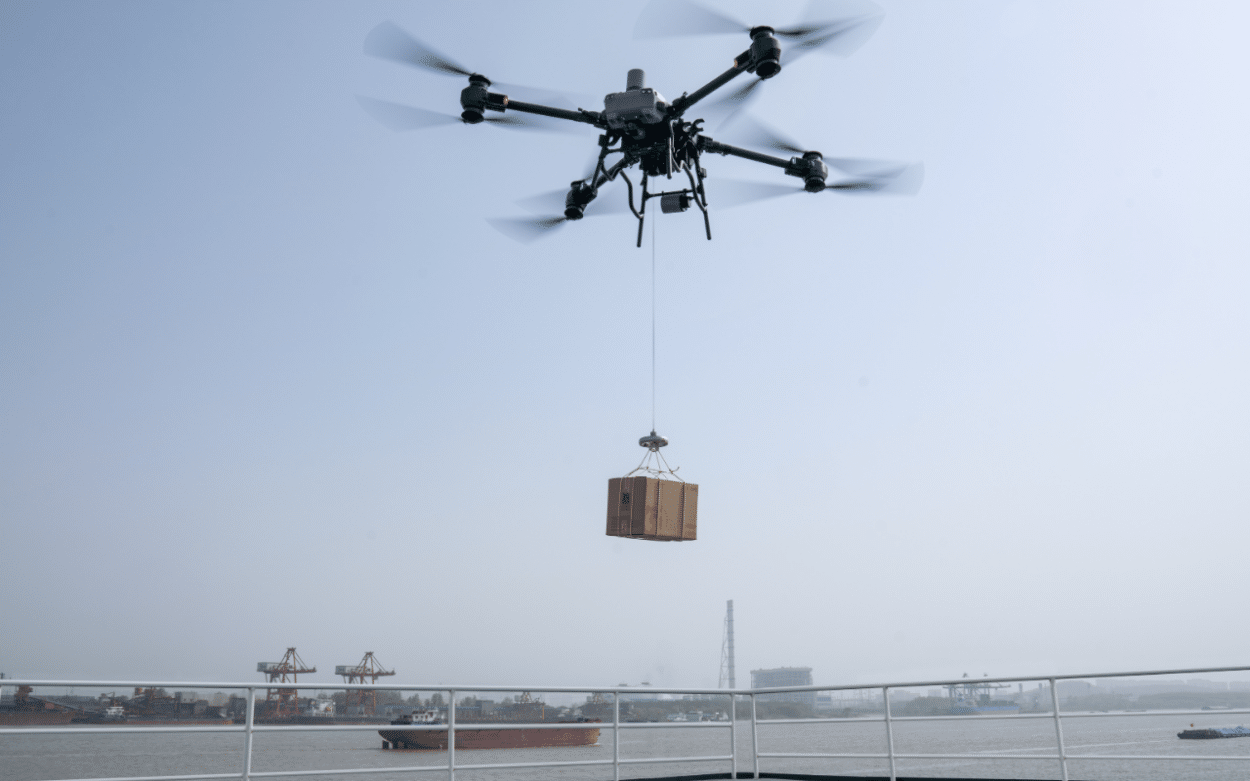Chinese drone manufacturer DJI, is launching the DJI FlyCart 30 (FC30), its first drone delivery solution. With its payload capacity and extended autonomy, the FC30 is poised to redefine aerial delivery efficiency in scenarios such as mountain transport, offshore logistics, and emergency relief efforts.
Even though DJI is a global leader in civilian and agricultural drones, and has democratized their use across industries, it had not introduced a delivery drone until today. The FlyCart 30, or FC30, is the first delivery drone system of the brand and is designed for cargo transportation. It is also foldable for easy transport in a standard-sized vehicle.
Various Transport Scenarios
The FC30 features a coaxial quad-rotor configuration with 8 carbon fiber blades. This enables a maximum flight speed of 20 m/s. In a dual-battery setup, it can transport a 30 kg payload over a distance of 16 km. In a single backup battery configuration, the payload capacity increases to 40 kg for an 8 km distance.
It supports two payload configurations:
In Cargo mode, a 70-liter container equipped with weight and center-of-gravity sensors is used to place payloads. This enhances balance and safety.
In Winch mode, a crane equipped with a winch transports payloads. This is for deliveries in areas lacking convenient landing sites. The winch system features a manually or automatically retractable 20 m cable capable of carrying 40 kg.



A remote pilot controls this process. Thanks to augmented reality projection on a screen, he or she can precisely place packages on the right landing point. The cable then lowers the payload, and the winch releases the package once it has touched the ground. This ensures a non-contact delivery. Then the drone heads back to its base position.
The DJI O3 transmission ensures a stable connection between the drone and remote controllers within a maximum range of 20 km. The dual-operator mode facilitates seamless control transfer between pilots situated at different locations with a single click.
According to Olivier Mondon, DJI’s Communication Director:
“The drone can transport anything that fits and is not considered a hazardous material, as long as it does not exceed the authorized weight.”
According to the company, applications could prove valuable in various hard-to-reach areas. This includes mountain transport, offshore logistics, and emergency relief efforts. It can, for example, transport solar panels in extremely remote and mountainous areas.
Various Environmental Scenarios and Operational Safety
The FC30 is also designed to perform in extreme weather and terrain conditions. It boasts an IP55 protection rating and it can operate in temperatures ranging from -20 to 45°C. It can also fly in winds up to 12 m/s. Optimized for altitudes up to 6,000 m, the standard propellers can carry a 30 kg payload up to 3,000 m. The self-heating batteries maintain peak performance even in low-temperature environments.

The FC30 contains safety features that enhance operational safety. Before takeoff, the drone evaluates the feasibility of the flight route based on environmental conditions. It ensures pre-flight safety through audiovisual messages and delayed propeller launches. During flight, dual active phased array radar and binocular optical systems enable multidirectional obstacle detection, day or night.
The integrated ADS-B receiver provides timely alerts in the presence of piloted aircraft nearby. In case of an emergency, a built-in parachute can deploy at low altitudes, to protect people and property.
A Software Suite for Streamlined Drone Delivery
DJI has also developed a software suite, composed of a cloud platform DeliveryHub, and an app, DJI Pilot 2.
DeliveryHub allows to streamline aerial delivery with operation planning, real-time operation status monitoring, centralized team resource management, and data collection and analysis.
It also enables live visualization through the drone’s high-resolution FPV camera.
DJI Pilot 2 allows manual flight and real-time display of flight status, and load status for safe and efficient operations. In extreme weather, DJI Pilot 2 alerts operators of risks and supports alternative landing site management.

Other Drones
Other drone manufacturers have already ventured into product delivery using different technologies. One such company, Zipline, employs a parachute system to drop packages.
DirectIndustry had the opportunity to visit their base in Rwanda in 2019. Their drones were there utilized to deliver medications and blood bags to hospitals or clinics located in hard-to-reach areas. The country is famously known as the “land of a thousand hills.” Reaching certain areas by road can sometimes take several hours. But by air, it can be accomplished in a matter of minutes.











